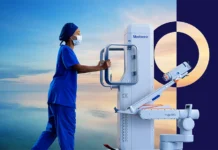A majority (55 percent) of Americans aged 18 and older currently prescribed anticoagulant medications (blood thinners) report that they very much or somewhat fear experiencing a life-threatening bleed and 73 percent say that they are more cautious about routine activities since being prescribed blood thinners, according to the results of a survey released by the National Blood Clot Alliance (NBCA). Among the 55 percent who said they fear major bleeding, nearly three-quarters (72 percent) say this concern has impacted their quality of life.
More than eight million people in┬Āthe United States┬Āare currently taking a blood thinner medication. Blood thinners can save lives, helping to treat and prevent dangerous blood clots, but can also pose a potentially serious side effect: Bleeding. Since blood thinners slow the clotting of blood, unwanted and sometimes dangerous bleeding can occur with the use of these medications.
“More and more people are living longer, more active lives, well into retirement. Many of these same people, particularly as they age, are prescribed blood thinners ŌĆō medications that save countless lives every year, but which can carry the potential risk of life-threatening bleeding,” said┬ĀMichael B. Streiff, M.D., FACP, Johns Hopkins Medical Institutions. “The results of our survey demonstrate that people are making lifestyle decisions ŌĆō possibly avoiding activities and hobbies they love ŌĆō such as gardening or exercising ŌĆō because they are afraid of experiencing serious or dangerous bleeding as a side effect of their blood thinning medication.”
While the survey results point to the fact that people prescribed blood thinners do have concerns about severe bleeding, the good news is that the survey results show they are talking to their doctor about their risks. A full 95 percent of survey respondents indicated they are having or have had at least one discussion with their physician about the risks and side effects of their medication, with 41 percent saying they have this discussion during every physician visit.
“I understand the benefit or importance of my blood thinning medication, but also recognize the bleeding risks associated with it,” said┬ĀCaroline Bernal-Silva, who has been on a blood thinner medication for 11 years. “I discuss my lifestyle, my routines, and all my activities every time I visit my doctor. My doctor has been very helpful in providing information and tools to help me minimize my risk of bleeding, but I do remain concerned, particularly when I’m traveling or vacationing in remote places.”
The NBCA survey, fielded in┬ĀFebruary 2020┬Āamong 500 Americans who are currently prescribed a blood thinner, had several central findings:
- Cautious about Routine Activities ŌĆō┬ĀPeople surveyed who reported being more cautious about routine activities since being prescribed their blood thinner medication are more careful┬Āwhen:
- Cooking or preparing food with knives or other sharp kitchen tools ŌĆō 64┬Āpercent
- Shaving ŌĆō 62 percent
- Going barefoot ŌĆō 53┬Āpercent
- Brushing teeth or flossing ŌĆō 49┬Āpercent
- Cautious about Leisure Activities┬Ā– People surveyed who reported being more cautious about leisure activities since being prescribed their medication are more careful┬Āwhen:
- Gardening ŌĆō 62 percent
- Working out at the gym or exercising ŌĆō 43┬Āpercent
- Traveling ŌĆō 39┬Āpercent
- Playing with children or grandchildren ŌĆō 36┬Āpercent
- Trying New Activities┬ĀŌĆō 42 percent of those surveyed indicated that the risk of major bleeding has discouraged them from trying new┬Āactivities
- Fear┬ĀŌĆō 55 percent of survey respondents indicated they live with a fear of a major bleeding incident and, of those people, nearly three-quarters (72 percent) have indicated that that fear has impacted their┬Ālife
- Travel┬ĀŌĆō A significant majority (89 percent) of those who indicated they would be more cautious about traveling since being prescribed blood thinners said they would be more likely to travel if they knew there were hospitals nearby that had medicines to stop or reverse a major┬Ābleed
“Our goal is always education and awareness. With this survey, our aim is to help people better understand and have confidence in the important treatment decisions that surround their care, and to stimulate important discussions with doctors, which we were particularly gratified to see are happening, because it is crucial that any unusual bruising or bleeding always be discussed with a doctor immediately,” said Dr. Streiff. “Make no mistake about it: Blood thinners save lives. But all medications have risks. What’s important is to understand the risks, and to really understand how, or if, any of the activities you love could increase your risk for serious bleeding. It’s also important to understand how, depending on the type of medication you are taking, a bleeding incident can be treated quickly.”
RESEARCH METHODOLOGY
The Bleeding Risk Awareness Survey was conducted online by Wakefield Research among 500 U.S. adults 18 and older prescribed a blood thinning medication,┬Ābetween February 10 and February 21. The margin of error was +/- 4.4%.


















